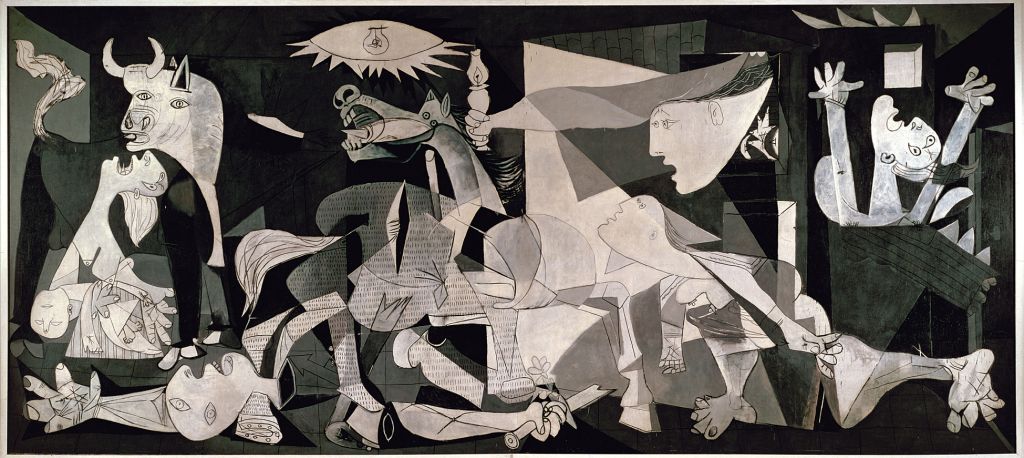Think of Picasso’s Guernica, Michelangelo’s David, Shakespeare’s Hamlet or Beethoven’s 5th Symphony
Can you draw a common line? They are masterpieces no doubt; but more than that they are monumental commentaries about life and its myriad connotations. They are a brief testament of their time, reflecting nature and imitating humanity in its most unaffected form.
This is the most amazing thing about art. It infects. It transports its audience/viewer to the mind of the creator, leaving behind an impression forever.
What is art?
Nothing can cure the soul but the senses, just as nothing can cure the senses but the soul. – Oscar Wilde
It is very difficult to pin-point. Richard Wollheim has aptly described art as “one of the most elusive of the traditional problems of human culture”. The nature of art itself is highly speculative. In medieval philosophy, the term ‘art’ applied to that which ‘contributed towards and produced necessaries and mainstays of life.’ The concept of creative or fine art developed more recently in the seventeenth century. From serving a basic, utilitarian purpose, art was now chosen to highlight the finer aspects of life. Artists began to use their creativity as a tool to engage their audience and instill in them a sense of beauty. There onward, art became a medium of expression through which some learnt to tell stories, while some learnt to brainstorm ideas, while many other taught themselves to document reality.
The concept of design
Art is not a mirror to hold up to society, but a hammer with which to shape it. – Bertolt Brecht
If creative art was evolving, so was commerce. And while the Artist was using his freedom of expression quite liberally, it was business which paid the price. The Artist became increasingly obscure. In his relentless pursuit of truth, his work became unabashedly cloistered and personal.
Such profound works of art (although, touched by genius, no doubt) neither had any commercial applicability nor did it seem to make any sense to the newly empowered ‘average consumer.’ Necessity facilitates invention and thus, in a desperate attempt to bridge this insurmountable gap between high art and commerce, the idea of design was conceived.

Biscuits Lefèvre-Utile, Alfons Mucha
Mucha was a key figure in the Art Nouveau movement. This movement is an important event in history which introduced the idea of commercial design to the world.
What is design?
Design is anything that touches human life, addresses its problems and makes it better. At the very onset, it starts with a plan. It is systematic. It has a goal and its end users in mind.
According to Wikipedia, It is the ‘creation of a plan or convention for the construction of an object or a system’. Design Council views design as ‘an activity that translates an idea into a blueprint for something useful, whether it’s a car, a building, a graphic, a service or a process.’
What is a good design? Well, the Google.com webpage is a powerful example of efficient designing. It is simple, clean and minimalist. Just the kind you would want your search engine to be. It neither gets into the way nor does it attract unwanted attention. A good design, thus, has this ability to integrate seamlessly with human lives, without being noticed.
Art vs. Design
The debate over whether art is more important or design came into prominence because of art’s seeming inability to address commercial concerns; although, in reality, there perhaps are three major reasons which contributed to such skepticism.
Purpose – While art need not be bound by a sense of purpose; in design, objective is everything. Art can afford to be elusive; while design, no matter how creative, must convey a clear message to its audience in the subtlest of manners. An artist starts with a blank canvas while designers begin with ideas. It is this atmosphere of restraint that sets the designer apart.
End users – Art has its own audience. These people turn to art to enhance their perceptions or share the artist’s aesthetic viewpoint. This is not the case for design. Its audience is vast and endless. When we are holding our mobile phone in our hand, we are not exactly appreciating its artistic worth. Rather, we are looking through its intricate design to search for the information we need. We notice the design only when it’s an obstruction. While art attracts attention to itself, design’s magnificence lies in its transparency.
Commercial viability – The question of commercial utility of art has baffled business organisations for centuries. Art cannot provide practical solutions to human problems. If art exists for the sake of art alone, how then will business thrive? The question, of course, is a pertinent one…Art’s inability to address these impending monetary issues forced the organisations to look for alternative means and that led them to Design.
The way forward
The world is constantly changing and with every stroke of change, we are moving forward. In this modern world, art and design do not engage in futile debates over which is more important. They adapt.
They adapt and blend so as to appear one. Artists have long ceased to be snobbish and designers are integrating art into their everyday design in order to improve the overall aesthetic experience of the end user.
The way of future is thus. Artists and designers will work closely together, balancing both art and science, creating masterpieces all over again.
View All projects Project Enquiry Form


